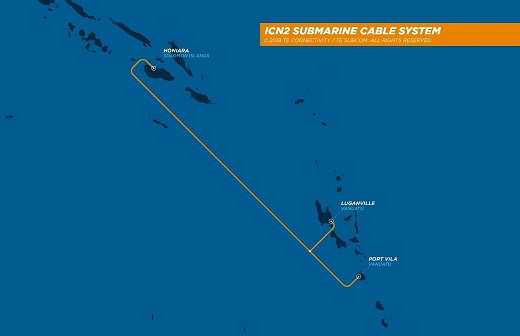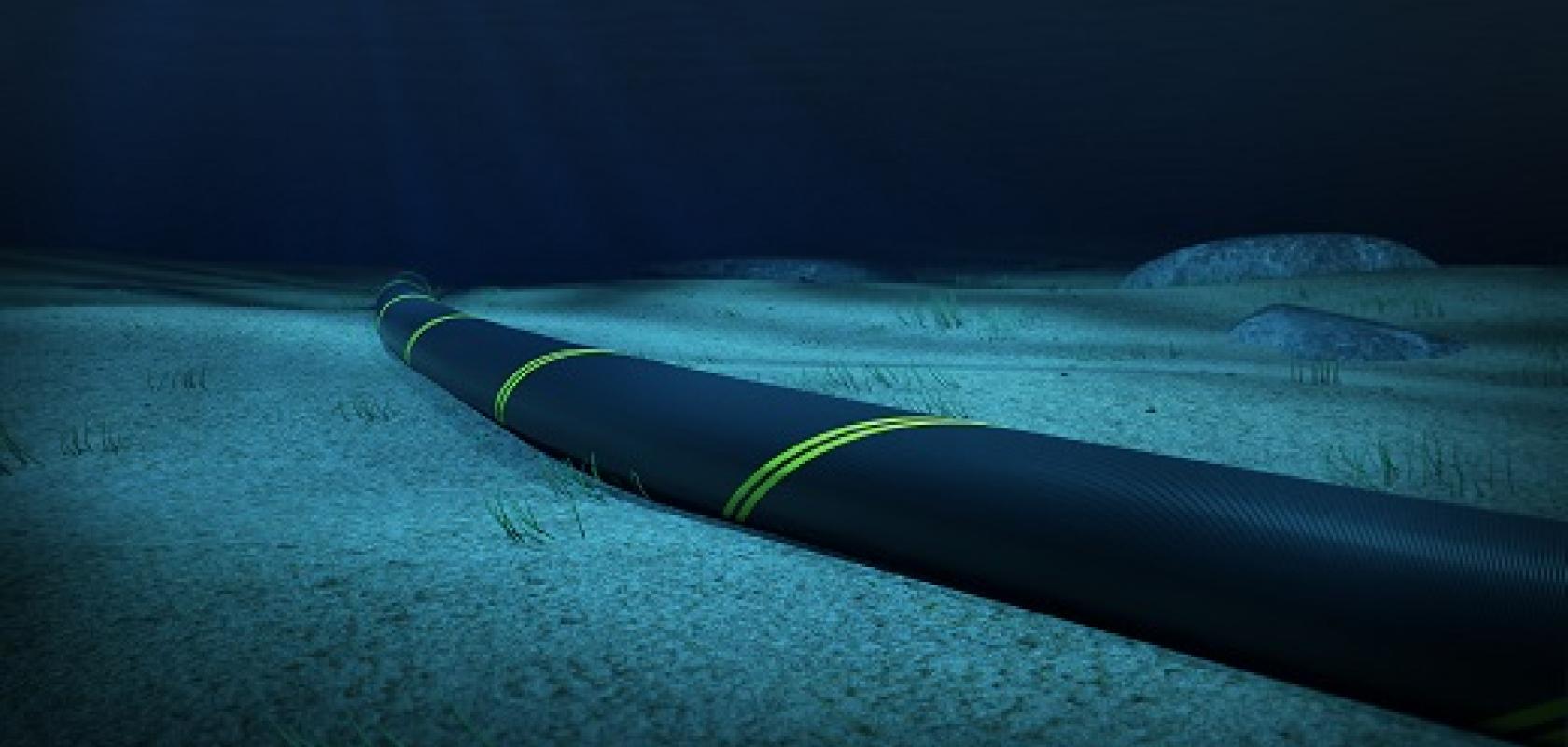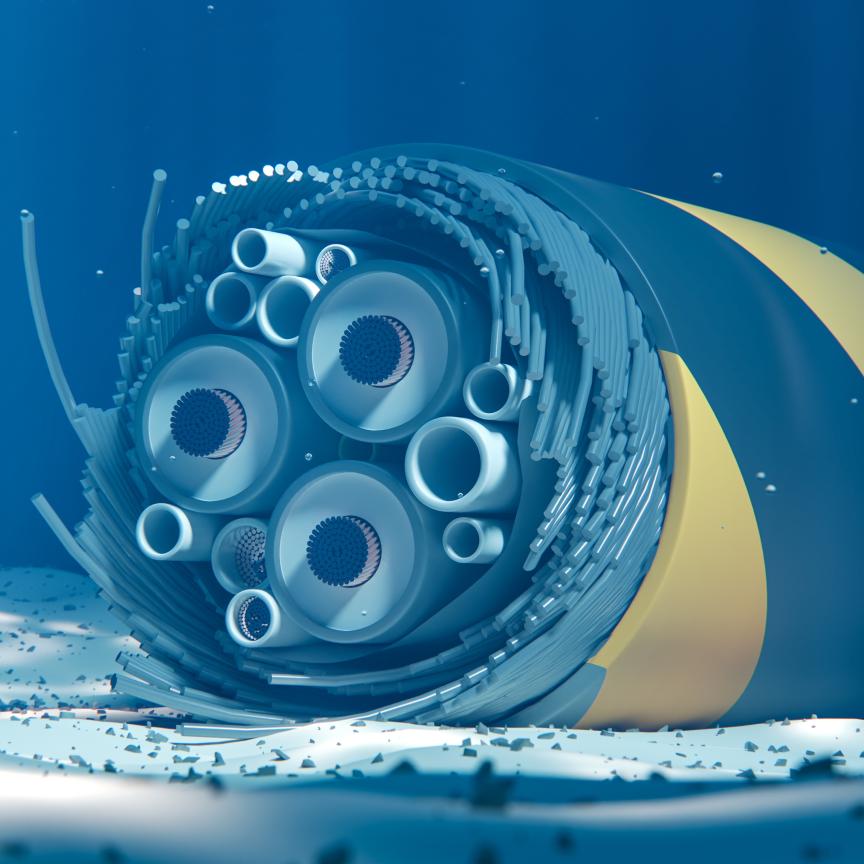There’s no denying that the last two decades have seen demand for bandwidth increasing – something that has provided much opportunity for growth for the networking market, but also presented it with some major challenges.
Fibre optic submarine networks have helped to greatly advance global communication services, thanks to the provision of highspeed data and video connections anywhere in the world. These systems have traditionally been of bespoke construction for each individual application, with the accompanying cost of deployment recognised as a necessary evil for long distance, high-capacity networks.
With recent enhancements in high-speed optics and advanced modulation techniques, however, fibre optic systems used on terrestrial networks have caught up with, and in many cases surpassed, the capabilities of submarine-specific versions, as Dr Chad Lamb, chief systems architect at optical transport equipment developer, XKL, explained: ‘Standard terrestrial wave-division multiplexing (WDM) systems now have the capability to operate directly over submarine networks, resulting in significant cost savings. In addition, integrating terrestrial and submarine networks enables reductions in equipment costs, space and power.
‘The number of internet users has skyrocketed, application bandwidth intensity has exploded, and the burgeoning Internet of Things (IoT) is projected to exponentially strain networks. In response, operators are re-thinking the concept of the traditional cable landing station (CLS) as the gateway between subsea and terrestrial networks. The industry is moving towards a model where data centres are positioned within close proximity to the CLS, or even jointly located with the CLS, serving both as the demarcation point and access to terrestrial networks; essentially transforming the CLS into a multi-purpose facility.’
Enhancing subsea cable access
Lamb attributes a number of reasons for this shift, all of which are a direct result of enhancing subsea cable access: lower latency, increased reliability and improved cost savings by cutting out incremental expenditures in terrestrial infrastructure. ‘Another driver,’ he said, ‘is that operators are finding they can connect their submarine cables directly to their customers within these data centres, thus improving services and realising cost savings on backhaul.’
So, what can be done to improve operational control of the transport layer, while at the same time maximise efficiencies of that equipment? For Lamb, the answer is two-fold. ‘First, it used to be that different equipment was designed for the data centre versus the CLS demarc,’ he said. ‘Some technology platforms have advanced and the current equipment functionality has broader applicability. It can be deployed both at the demarc at the CLS and serve the needs of the nearby data centre – regardless of the type of CLS (coupled/collocated or separate).
‘Multiple equipment models can now be replaced, or new networks deployed, with single platforms adaptable to both the CLS demarc and integration with the metro/regional network for lit services, wavelength services, native DWDM, etc. These platforms can also handle multiple services and protocols (Ethernet, SONET/SDH, fibre channel) at the same time, providing great flexibility. The result is a single, multi-functional platform that benefits the end-user by lowering OPEX.’
Managing inefficiencies
Second, said Lamb, a key solution to increasing capacity to meet the growing demand, is managing the inefficiencies of the Ethernet, which, by its nature, contains framing overhead. ‘Layer 2/3 devices, such as routers and switches, transport data utilising only 15 to 50 per cent of the available bandwidth across the optical port,’ he explained.
‘This is, in part, due to sending inter-packet gaps as well as idle packets, but primarily is due to how operators have their networks set up. is wastes 50 to 85 per cent of the available bandwidth.’
Lamb believes that there is now technology available to remove inefficiencies such as these at the packet level, because ‘adding more ports to a network isn’t cost effective. Solving the inefficiencies at the core is an innovative way to get more out of the equipment you already have’.
Instead, Lamb believes that complementary approaches to increasing network efficiency rely on better aggregation methodologies, such as statistical multiplexing.
‘Combining coherent technology along with the “pool of bandwidth” that is achievable with statistical multiplexing, allows for optimal control of bandwidth allocation, growth and the spiralling costs of transport equipment,’ he said.
‘By allocating bandwidth via statistical multiplexing algorithms, which removes the inefficiencies
of interpacket gaps and idle frames, traffic is intelligently aggregated across each port. This maximises channel efficiency, as well as provides bandwidth shaping controls directly to the operator. And that is something that is important to consider when looking at subsea–terrestrial network integration. Given the significant costs associated with subsea deployments, operators are looking for any way to maximise their investments, increase efficiency, and simplify operations.’
Blurring boundaries
Network strategy and technology company Ciena has arguably been instrumental in the blurring of boundaries between submarine and terrestrial networks, having launched its GeoMesh architecture designed to view the two network types as seamless, end-to-end service paths.
Brian Lavallée, senior director of portfolio marketing at the company, explained: ‘Until recently, operators thought of submarine networks as distinct from terrestrial networks.
‘They ran using special technologies, had different business rationales, and were isolated from the other assets operators used to run their business – for example, typically the demarcation point was in a station building on the beach.’
It is as a result of this, believes Ciena, that terrestrial networks have advanced at a greater pace than their subsea counterparts, despite their provision of much critical service for so much of the world’s data.
‘A lot of equipment didn’t have to stop at the beach. We removed that and today there is no real demarcation point – all optical forms end-to-end service paths.’ The benefits of this, asserts Lavallée, include ‘a lot less equipment; less cost points; less equipment in the network itself; and the development of technology for the network.’
Looking at the shift, Lavallée also acknowledged the change in dynamic between service and content providers. ‘Five to six years ago,’ he said, ‘there were service providers around the world. Now, with the emergence of the Googles, etc, there has been a big shift in demand – mainly to content providers but also service and other providers, and now the content providers are also building cables.
Thou shalt be open
‘The number one requirement is to cram more data into fibre – that’s our bread and butter. Open submarine networks are a revolutionary change after service providers told that “thou shalt be open”. From a technology perspective, openness changes how submarine networks are modelled, designed, deployed, and managed. From a business perspective, network operators can choose best-of-breed technologies from a broader selection of vendors, streamline operational processes, accelerate service innovation and reduce time-to-market.
‘Undersea cables are nothing new,’ reasoned Lavallée. ‘They go back to the American civil war and have been important for centuries. Today, around 95 per cent of the world’s intercontinental electronic communications traffic travels over submarine networks.’
Any damage caused to the cable systems would have a real impact. ‘About two thirds of all submarine cable cuts are caused by boats or fishing nets, which are easy to repair,’ reasoned Lavallée. ‘But in the event of a natural disaster, such as a tsunami, when the tidal wave comes inland it can cause multiple cuts. In the same way, earthquakes can snap them and all the pieces need to be found.
‘There’s no Plan B for interconnecting continents at the same capacity, reliability, and latency as submarine cables, so the technologies will (and must) continue to evolve, out of sheer necessity.’
TE SubCom concurs, as Edwin Muth, its director for product line management explained: ‘Submarine networks are no longer just “fat pipes” connecting two shores point-to-point, as they were in the past. As terrestrial network control mechanisms have evolved over the last few years, so too has the integration of land and submarine networks.
‘In the terrestrial world, the ability to gather data and control a network has led to many benefits. Accurate knowledge of the state of each network segment, the routing of data through a dynamic optical path and the ability to dynamically change a network to direct capacity to various segments are major advances.

Higher efficiency in network utilisation means increased revenue from that network, and the emergence of new services like bandwidth-on-demand has also led to savings for the customer.’
Rapid adoption
While terrestrial networks have benefited from these concepts for several years, said Muth, submarine networks owners are quickly adopting dynamic elements as well. ‘These include reconfigurable optical add-drop multiplexer (ROADM) capabilities and other reconfigurable devices, such as fibre switches.’
Mechanisms for submarine network control have traditionally been regulated through graphical interfaces in the submarine element management system, with an operator at a station changing the network configuration. ‘Today, however,’ explained Muth, ‘the use of remote interfaces such as the Representational State Transfer architecture style (ReST) are used to provide system health status to the overall network orchestrator, which is typically a programmed set of algorithms for both the terrestrial and submarine network. Any degradation of the system, such as a shunt fault, cut, or other event is clearly understood by the orchestrator.’
This will then allow for appropriate actions to be taken to reroute traffic to other paths for a meshed network and simplifies restoration.
With ROADM deployment undersea, network optimisation can take place, believes Muth. Dynamic control through ReST interfaces allows the orchestrator to reroute wavelengths to multiple locations dynamically, based on traffic demands. This allows submarine networks to evolve from point-to-point data links to fully dynamic and reconfigurable bandwidth segments that adapt to data centre needs or other requirements.
‘With this control,’ he said, ‘comes the need to partition submarine element control among the owners of a submarine system. For example, some submarine cable elements that affect other users, such as a branching unit, will have restricted authorisation to effect a change. A ROADM owner could change the optical path they own without changing performance for other users who share the same physical product undersea.
‘The proper level of authentication is based on a foundation of security in the architecture of ocean control, which includes the use of certificates, radius authentication and other measures to maintain system integrity.
‘The integration between terrestrial and submarine cables is achieved through a central control orchestrator or with network operating system routines in the data centre,’ continued Muth. ‘The interfaces we call ocean control are non-proprietary and can be adopted by any orchestrator vendor, another essential element that makes up the open cables business model.’


